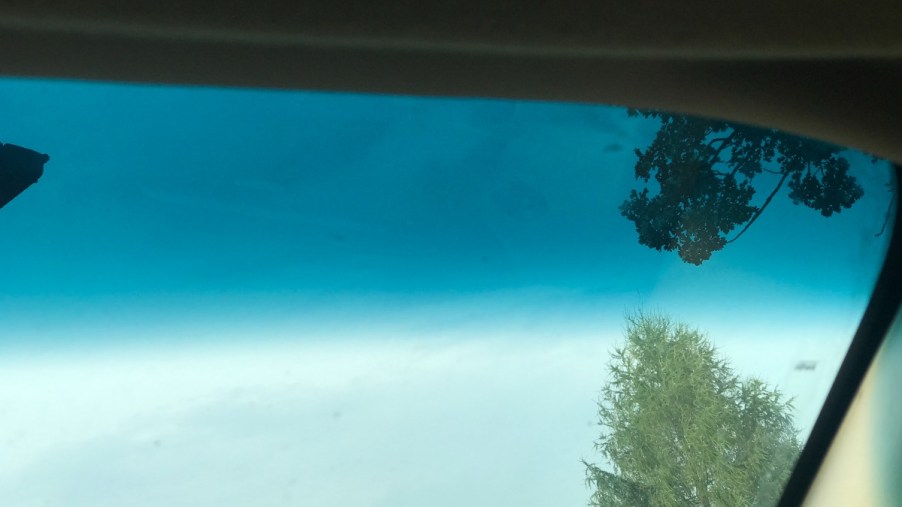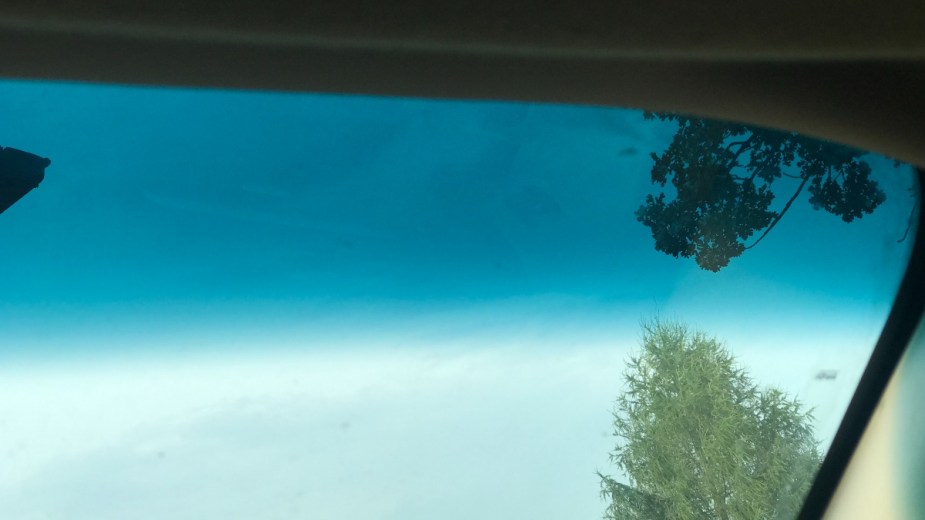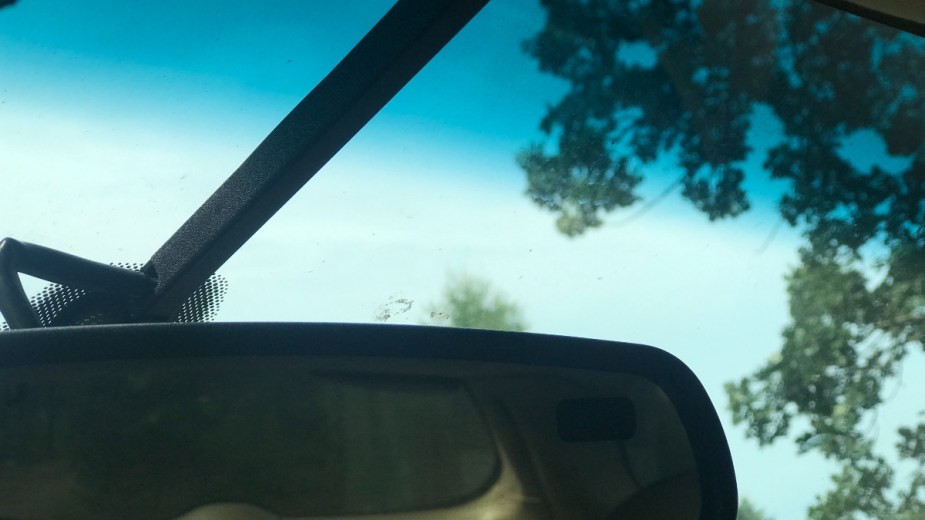
Why Are Car Windshields Color-Tinted at the Top?
At MotorBiscuit, we’re here to unravel the mysteries of car windshields. In an earlier article, we covered why there are small black dots on a windshield. In another one, we showed the secret apple trick on a windshield. Now, for inquiring minds, we detail why car windshields are color-tinted at the top.
What is the color tinting at the top of a car windshield?

If you glance at the top of the windshield of your car, you’ll likely see a layer of color tinting at the top. Most windshields on modern vehicles have a blue or green color for the tinting, while others have a colorless tint.
The primary reason for the color-tinted windshield is to protect your eyes from the sun while driving. However, there are other reasons, which we cover below. With the blue or green tinting, it is more difficult for the UV rays and heat from the sun to penetrate the glass. The tinting is similar to the shade band on sunglasses.
The color tinting is part of the production process for the manufacture of windshields. During the original OEM factory build of a car, tinting isn’t added after the windshield is constructed. Instead, while on the production line, it is fitted to the windshield. Carefully fitting the tinting at a precise size is crucial. Otherwise, small air bubbles can form between the glass and the tinting, as detailed by Vehicle Freak.
For some cars, it might be challenging to see the color-tinted layer, especially if viewing it from a head-on perspective. However, if you look at the top of the windshield from an angle — or from below, you’ll likely be able to see the tinting more clearly.
Reasons why car windshields have a layer of color tinting at the top

There are several reasons why car windshields have a layer of color tinting at the top. This includes:
- Reduces strain on the eyes
- Protects the driver and passengers from UV rays
- Protects the cabin of a car from UV rays
- Reduces glare from sunlight
- Helps keep the cabin cool
Reduces strain on the eyes
When going for a long trip, drivers can experience a great deal of strain on the eyes. The strain is even more significant on bright, sunny days. However, a color-tinted windshield helps reduce the eye strain from the sunlight.
Protects the driver and passengers from UV rays
The sun has ultraviolet — or UV rays. Prolonged exposure to UV rays can result in a sunburn and increases the risk of skin cancer. Much like sunscreen, the blue or green color tinting protects people from the harmful effects of UV rays.
Protects the cabin of a car from UV rays
The color-tinted layer at the top of a windshield also protects your car’s interior from the damaging effects of UV rays. With prolonged exposure to sunlight, the upholstery on the seats can fade. However, tinting can delay and reduce the fading.
Reduces glare from sunlight
Have you ever driven a car, and then the sunlight hit the windshield, making it difficult to see where you’re going? With intense sunlight glare, it can be challenging to view the road and other cars around you. However, the top layer of color tinting helps reduce this glare — while providing good visibility.
A color-tinted windshield helps keep the cabin cool
The cabin of a car can get very hot and stuffy, especially during the middle of summer. While not a replacement for the A/C system, color tinting on a windshield can help keep the cabin in a vehicle cool by blocking UV rays.
Whether it’s reducing glare and eye strain, protection from harmful UV rays, or keeping the cabin cool, there are several important reasons for car windshields to have a layer of color tinting at the top.


